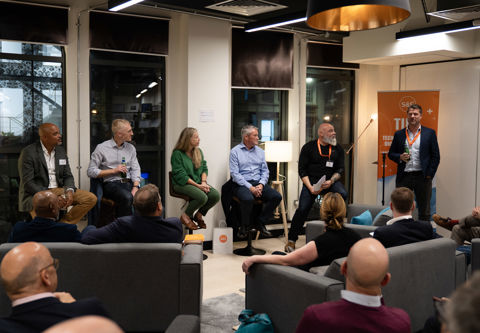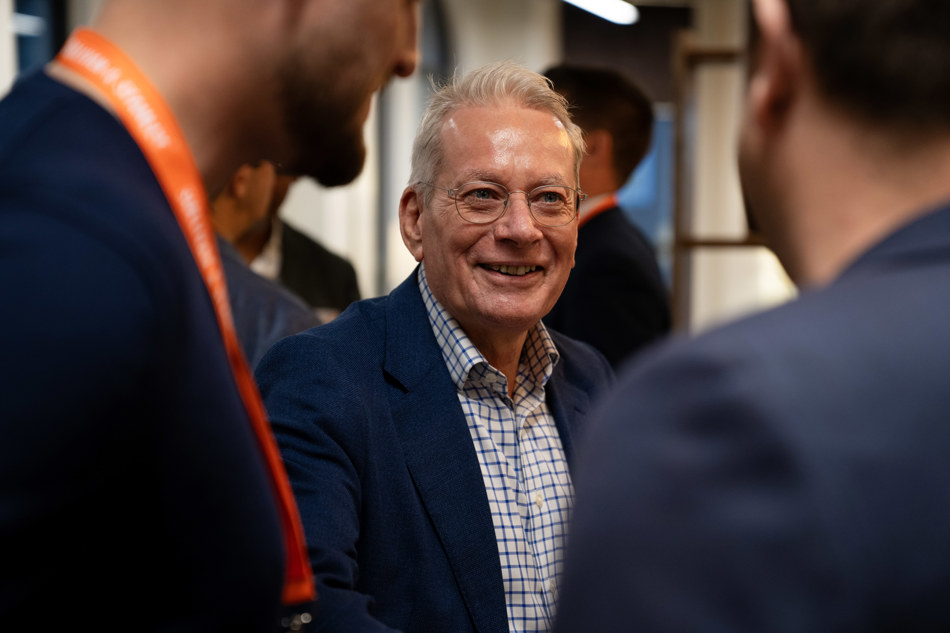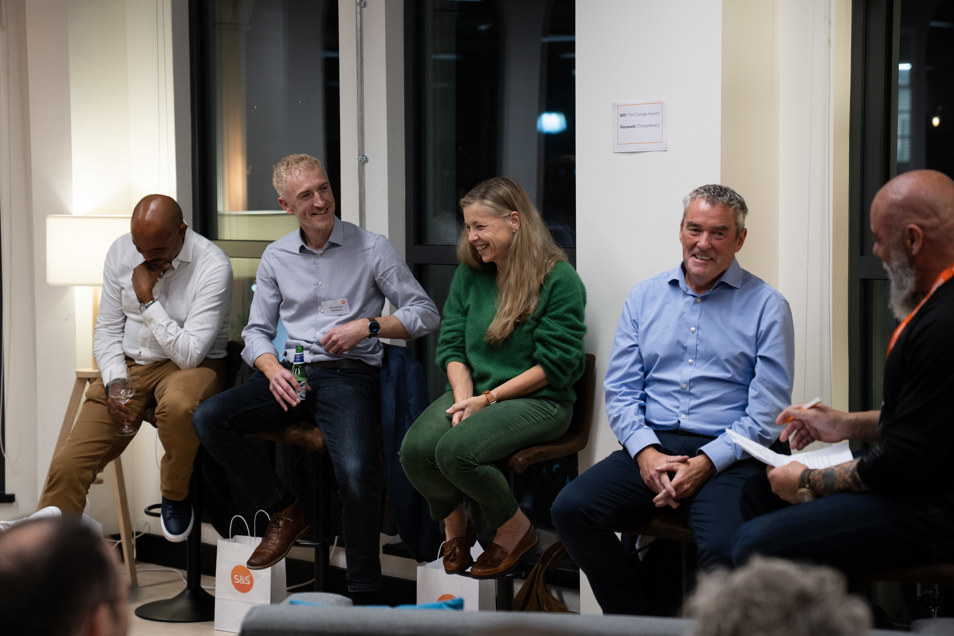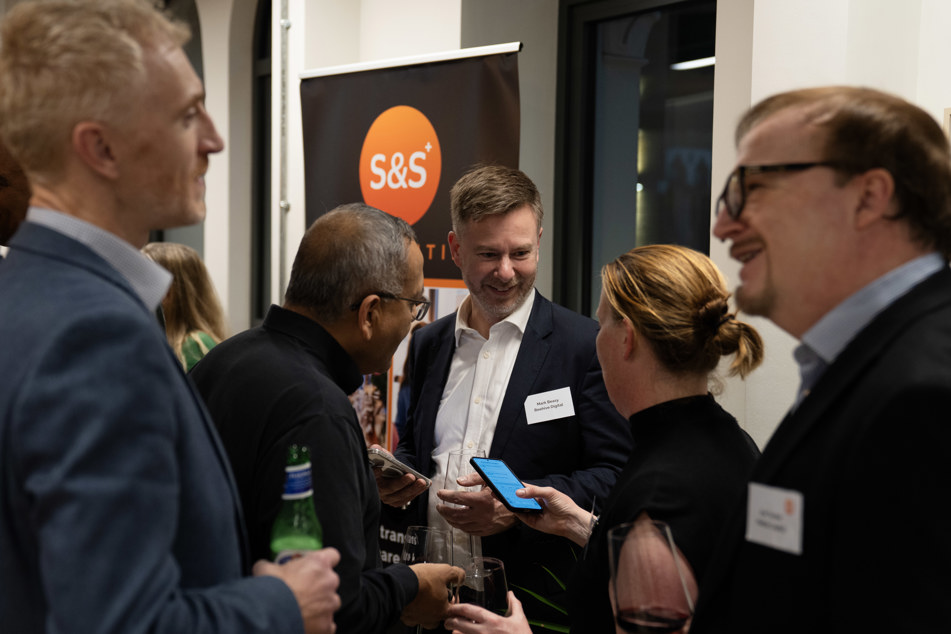Modern Delivery: Wounds, Wins & Wisdom

In a fast-moving landscape where transformation programmes often appear successful on paper yet fail to deliver meaningful outcomes, the question facing many leaders is simple but critical: what does effective delivery actually look like today?
That question sat at the heart of Modern Delivery: Wounds, Wisdom and Wins, the latest TIDE Community event held at Sullivan & Stanley’s London HQ. Hosted by Adrian Stalham, Chief Change Officer at S&S, the discussion brought together a distinguished panel of practitioners who have led large-scale transformation across multiple sectors: Femi Bamisaiye (Chief Technology & Operating Officer, Nest Pensions), Ben Johnson (Director of IT – UK & International, Amentum), Fiona Jones (Vice President of Technology, Maximus UK), and Kevin O’Brien (Chief Information Officer, Headlam Group).
The structure of the evening was deliberately simple: explore the wounds (where delivery goes wrong), share the wisdom (what experience teaches us), and celebrate the wins (where modern delivery works as intended). The result was a candid and highly practical conversation about the realities of leading change in complex organisations.
Wounds: Why delivery so often fails
Misalignment between intent and execution
Across every story, one theme dominated: misalignment. Programmes begin with well-intentioned strategies but quickly drift away from the outcomes they were designed to achieve. As Femi reflected, “When delivery goes wrong, it’s usually because the parts are misaligned… you’re delivering against a set of requirements that are already four years out of date.”
Thousands of pages of documentation and years of elapsed time create the illusion of control, yet the business context has already shifted. The group agreed that the traditional reliance on static requirements still undermines success today.
Measuring activity, not value
Ben offered a cautionary comparison that he has observed in enterprise-wide transformation that it is critical to avoid: “The surgery was a great success. Sadly, the patient’s dead.” The lesson was clear - it is entirely possible to deliver a programme that meets every milestone while providing no real business benefit. Value, not velocity, must be the governing measure.
Fragmented processes and cultural inertia
Kevin described how legacy processes and local optimisation can fracture large organisations: multiple business units, each with their own “best practice,” and decades-old systems standing in the way of change. His solution, a disciplined commitment to out-of-the-box functionality, required sponsorship from the top and an unambiguous message that simplification is a strategic choice, not a compromise.
Ben added that many “delivery failures” are, in fact, cultural failures. “At Amentum 90% of our change effort has been about culture and adoption, not technology. The tech was straightforward. Getting 54,000 people to come on the journey - that was the hard part.”
Leadership under pressure
The panel discussed how leaders react when conditions for success are not in place. The consensus was pragmatic: diagnose the constraint, engage the right expertise and avoid the temptation to micromanage. As Fiona noted, effective leaders know when to intervene and when to step back: “Sometimes the best thing you can do is give a situation time to resolve. If you’ve built the right culture, it often does.”

Wins: What successful delivery looks like today
Empowered, multidisciplinary teams
For Femi, a major turning point came during his tenure at a UK courier and postal service provider, when he re-engineered how integration was delivered. “We built a multidisciplinary team around the platform empowered to decide, equipped to act.” What previously took six months could be achieved in two weeks at a fraction of the cost. The difference was not methodology, but empowerment.
True ownership
Kevin emphasised that large-scale change cannot be treated as a part-time responsibility: “Good delivery doesn’t happen at the side of the desk.” Teams must have a defined mission, the authority to make decisions, and the accountability to deliver outcomes.
Culture of trust and collaboration
Ben offered perhaps the most direct principle of the evening: “No brilliant a**holes. The cost of teamwork is too high.” Just one toxic high-performer can erode trust across an entire programme. Sustained success depends on mutual respect and shared purpose, not individual heroics.
Silent success
Fiona observed that the most effective programmes are often the quietest. Smooth launches, seamless adoption and genuine enthusiasm from users, rather than fanfare, are the real signs of delivery maturity. The goal is to create pull from the business, not to push for recognition.

Wisdom: What experience teaches us
Focus on the vital 80%
Perfectionism is the enemy of momentum. Leaders must have the confidence to deliver the 80% that drives value and be content to defer the rest. But always come back to it and iterate where possible. Clear acceptance criteria are critical: without them, teams do not know when to stop.
Decisions where intelligence resides
Successful programmes bring operational experts and key influencers into the heart of delivery. As Femi described, “They become part of the programme team - not stakeholders, but participants.” Empowering decision-making at the point of greatest knowledge prevents drift and builds ownership.
Resilience and learning
Failure, when handled well, can demonstrate the maturity of an organisation. At one organisation, a critical release had to be rolled back after deployment. Rather than conceal it, the team celebrated the fact that the recovery process worked as designed. This deserved to be celebrated and showed that the company’s resilience planning was real.
Leadership restraint
True leadership in delivery is about guidance, not control. As Adrian put it, “Hands on, fingers out.” Leaders must set direction, remove blockers and trust the system they’ve built. Intervening too early often creates more disruption than it prevents.

The AI paradox
The conversation inevitably turned to artificial intelligence and its growing impact on delivery models. Clients are increasingly asking suppliers to demonstrate how they are integrating AI, yet the commercial implications are complex.
As Ben observed, “When AI reduces the number of people on a contract, revenue can fall even though efficiency improves. We have to find new ways to measure and price value.”
The panel agreed that AI should be treated as an enabler of outcomes, not simply a cost-reduction mechanism. Responsible adoption demands robust governance, clarity on ownership of data and IP, and a “controlled experimentation” mindset. Start small, contain the blast radius, learn and scale responsibly.
From wounds to wins: A practical framework
- Align intent and outcomes. Define success before you start.
- Design empowered teams. Co-locate decision-making with expertise.
- Simplify first. Standardise wherever possible; customise only where it adds value.
- Dedicate capacity. Delivery cannot be a side-of-desk activity.
- Measure momentum, not motion. Value delivered every 90 days beats a five-year milestone plan.
- Plan for resilience. Test rollback and recovery as part of “done.”
- Shape the culture. Address resistance early, especially in the middle layers.
- Protect the environment. No toxic high performers; trust and safety drive performance.
- Link value to outcomes. Especially in the age of AI, commercial models must evolve.
- Know your landscape. Maintain continuous visibility across data, architecture and risk.
Modern delivery is not defined by methodology or technology; it is defined by clarity, discipline and trust. The tools may evolve, but the fundamentals remain human: alignment of purpose, empowerment of teams and leadership with humility and resolve.
As the discussion drew to a close, Adrian captured the mood perfectly:
“Modern delivery isn’t about new frameworks, it’s about how we deliver real outcomes, together.”
The message for leaders was clear: To deliver lasting change, stop chasing process, start enabling people and build organisations where progress is both possible and repeatable.
TIDE is a community for technology and innovation leaders navigating digital transformation and shaping the future of their organisations.
If you'd like to join us or know someone who should be part of the conversation, get in touch.